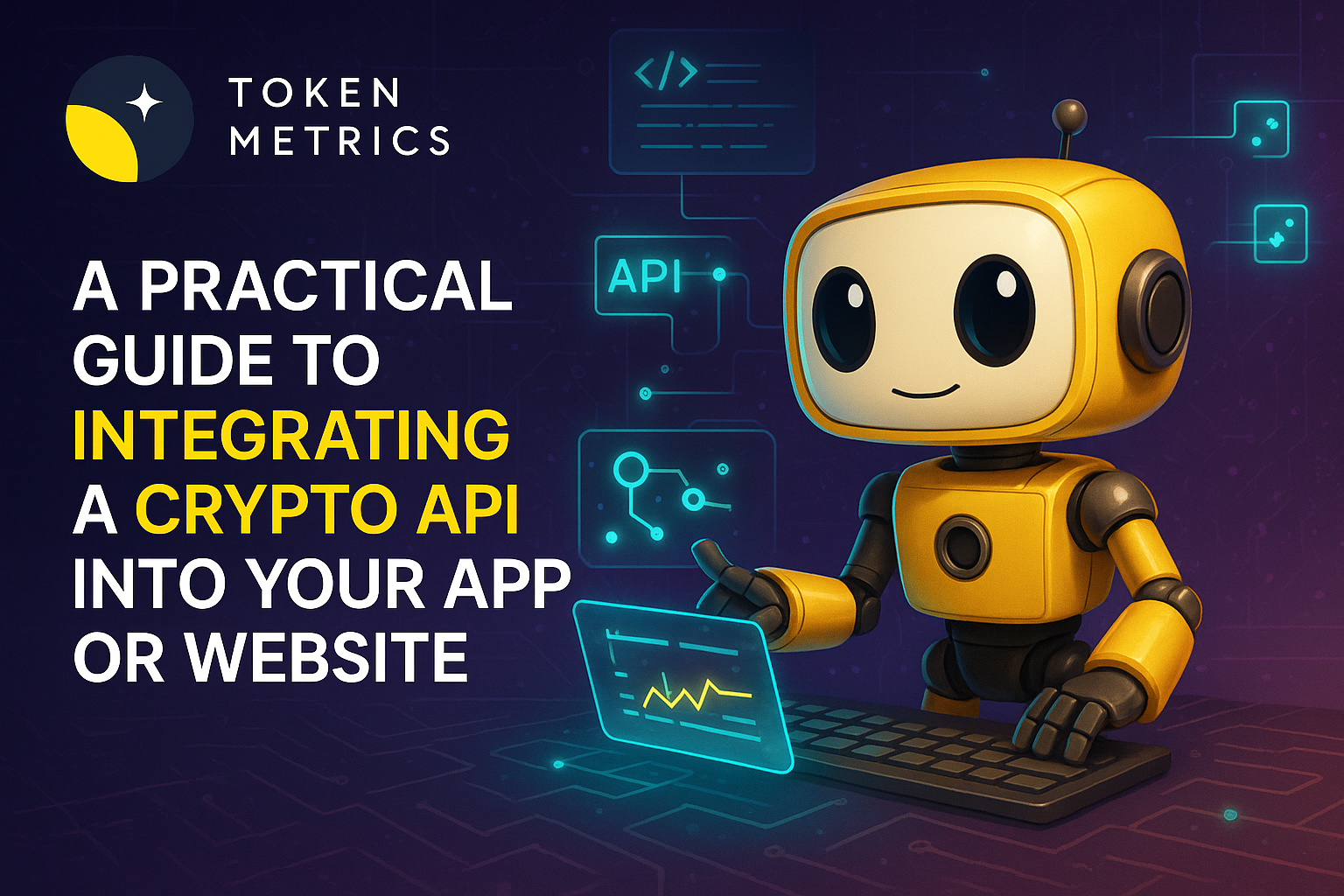AI Crypto Trading with Token Metrics Crypto API and OpenAI Agents SDK: The Future of Autonomous Crypto Intelligence

Why This Integration Matters
Developer demand for high-fidelity market data has never been higher, and so has the need for agentic AI that can act on that data. Token Metrics delivers one of the best crypto API experiences on the market, streaming tick-level prices, on-chain metrics, and proprietary AI grades across 6,000+ assets. Meanwhile, OpenAI’s new Agents SDK gives engineers a lightweight way to orchestrate autonomous AI workflows—without the overhead of a full UI—by chaining model calls, tools, and memory under a single, developer-friendly abstraction. Together they form a plug-and-play stack for building real-time trading bots, research copilots, and portfolio dashboards that think and act for themselves.
A Quick Primer on the Token Metrics Crypto API & SDK
- Comprehensive Coverage: Tick-level pricing, liquidity snapshots, and on-chain activity for thousands of tokens.
- Actionable AI: Trader and Investor Grades fuse technical, on-chain, social, and venture-funding signals into a single score that beats raw price feeds for alpha generation.
- Ready-Made Signals: Long/short entries and back-tested model outputs arrive via one endpoint—perfect for time-critical agents.
- Instant Integration: Official Python and TypeScript SDKs handle auth, retries, and pandas helpers so you can prototype in minutes.
Because the service unifies raw market data with higher-level AI insight, many builders call it the token metrics crypto API of choice for agentic applications.
What Sets the OpenAI Agents SDK Apart
Unlike prior frameworks that mixed business logic with UI layers, the Agents SDK is headless by design. You write plain TypeScript (or JavaScript) that:
- Defines tools (functions, web-search, file search, or external APIs).
- Describes an agent goal and supplies the tools it can call.
- Streams back structured steps & final answers so you can trace, test, and fine-tune.
Under the hood, the SDK coordinates multiple model calls, routes arguments to tools, and maintains short-term memory—freeing you to focus on domain logic.
Bridging the Two with the Crypto MCP Server
Token Metrics recently shipped its Crypto MCP Server, a lightweight gateway that normalises every client—OpenAI, Claude, Cursor, VS Code, Windsurf, and more—around a single schema and API key. One paste of your key and the OpenAI Agents SDK can query real-time grades, prices, and signals through the same endpoint used in your IDE or CLI.
Why MCP?
Consistency—every tool sees the same value for “Trader Grade.”
One-time auth—store one key, let the server handle headers.
Faster prototyping—copy code between Cursor and Windsurf without rewriting requests.
Lower cost—shared quota plus TMAI staking discounts.
In fewer than 30 lines you’ve built a self-orchestrating research assistant that pulls live data from the best crypto API and reasons with GPT-4o.
Architecture Under the Hood
- Agent Layer – OpenAI Agents SDK manages state, reasoning, and tool routing.
- Tool Layer – Each Token Metrics endpoint (prices, grades, signals) is wrapped as an Agents SDK tool.
- Data Layer – The MCP Server proxies calls to the Token Metrics REST API, unifying auth and schemas.
- Execution Layer – Agents call the tools; tools call MCP; MCP returns JSON; the agent responds.
Because every piece is modular, you can swap GPT-4o for GPT-4.1, add a DEX trading function, or stream outputs to a React dashboard—no core rewrites required.
Performance & Pricing Highlights
- Free Tier: 5 000 calls/month—ideal for proof-of-concept agents.
- Premium Tier: 100 000 calls/month and three-year history, unlocking AI Agent endpoints for production workloads.
- VIP: 500 000 calls/month and unlimited history for institutional desks.
OpenAI usage is metered per token, but the Agents SDK optimises context windows and tool invocations, often yielding lower compute cost than bespoke chains.
Roadmap & Next Steps
Token Metrics is rolling out first-party TypeScript helpers that auto-generate tool schemas from the OpenAPI spec, making tool wrapping a one-liner. On the OpenAI side, Responses API is slated to replace the Assistants API by mid-2026, and the Agents SDK will track that upgrade.
Ready to build your own autonomous finance stack?
- Grab a free Token Metrics key → app.tokenmetrics.com
- Clone the Agents SDK starter repo → npx degit openai/agents-sdk-starter
- Ship something your traders will love.
- Watch demo here
The synergy between the Token Metrics crypto API and OpenAI’s Agents SDK isn’t just another integration; it’s the missing link between raw blockchain data and actionable, self-operating intelligence. Tap in today and start letting your agents do the heavy lifting.
Create Your Free Token Metrics Account

.png)




%201.svg)
%201.svg)


%201.svg)










.svg)




.png)